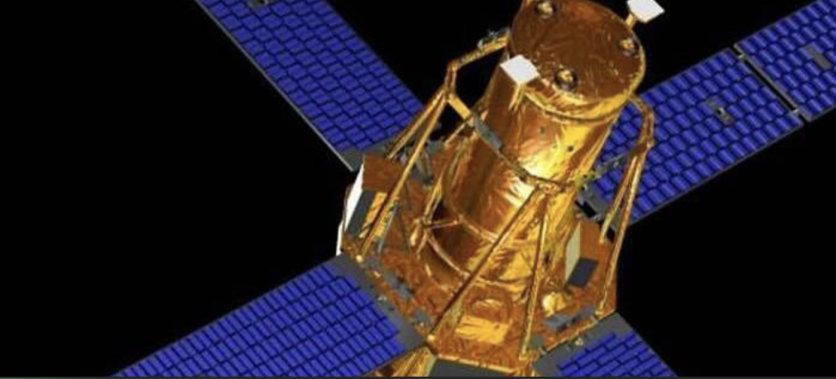An old and defunct 660-lb. satellite is set to re-enter the Earth's atmosphere and make a landing back on the planet this Wednesday night, and NASA confirms it is the more than 20-year-old satellite, Rhessi. After being shut down in 2018 as it lost communications for the solar energy imager spacecraft, it is now bound for its faithful return, with NASA addressing its risks to be "low."
The agency and the Department of Defense did not disclose the location of where the satellite will land and expect it to still be intact after its atmospheric reentry burn.

NASA's Rhessi is Coming Home-Collision, Risks are 'Low' to Humans
NASA's RHESSI (Reuven Ramaty High Energy Solar Spectroscopic Imager) satellite, which has been observing high-energy X-rays from solar flares for over 18 years, is expected to re-enter Earth's atmosphere on Wednesday night. However, NASA has assured the public that the risks to humans are low, with an estimated 1-in-2,467 chance of the satellite hitting people or homes.
This low risk is primarily due to the vast majority of Earth's surface being covered by water or uninhabited areas, and the fact that the satellite is expected to burn up upon re-entry due to the high temperatures generated by the friction with the Earth's atmosphere.
It is expected to arrive by 9:30 p.m. EDT on Wednesday, April 19, with NASA expecting an uncertainty of +/- 16 hours.
Moreover, the agency expects most of the satellite to burn up upon reentry, with only a few of its components to survive upon its return. Further update predictions will be provided by NASA and Defense.
What is the Rhessi Satellite and its Function from Before?
The RHESSI satellite was launched by NASA in February 2002 and has since provided valuable data on solar flares and their impact on Earth's atmosphere. The satellite's mission was to investigate the physics of solar flares and the release of high-energy particles from the Sun.
However, in 2018, the satellite ceased its scientific operations and was decommissioned, seeing a 16-year run on its solar energy imagery feat.
NASA's Rhessi and Re-Entering Satellites
Previous satellites in orbit and other missions in the different regions of the cosmos have also made their way back to the planet for re-entry. There was a failed Russian Satellite called the Angara A5 which reentered earlier this year, and it targeted the Pacific Ocean for its landing spot to avoid any significant casualties.
The ESA is also developing a new tech called the "ADEO-N," a.k.a. the Angel Wings, that will help re-entering satellites or spacecraft glide their way back after passing through the Earth's atmosphere.
NASA's RHESSI satellite is expected to re-enter Earth's atmosphere on Wednesday night with a low risk to humans and property. While the exact landing location is currently undisclosed, NASA has assured the public that the risks are minimal.
This reentry event serves as a reminder of the importance of responsible space debris management to reduce the cosmic heavens of space trash and avoid risks in the long run.

ⓒ 2025 TECHTIMES.com All rights reserved. Do not reproduce without permission.




